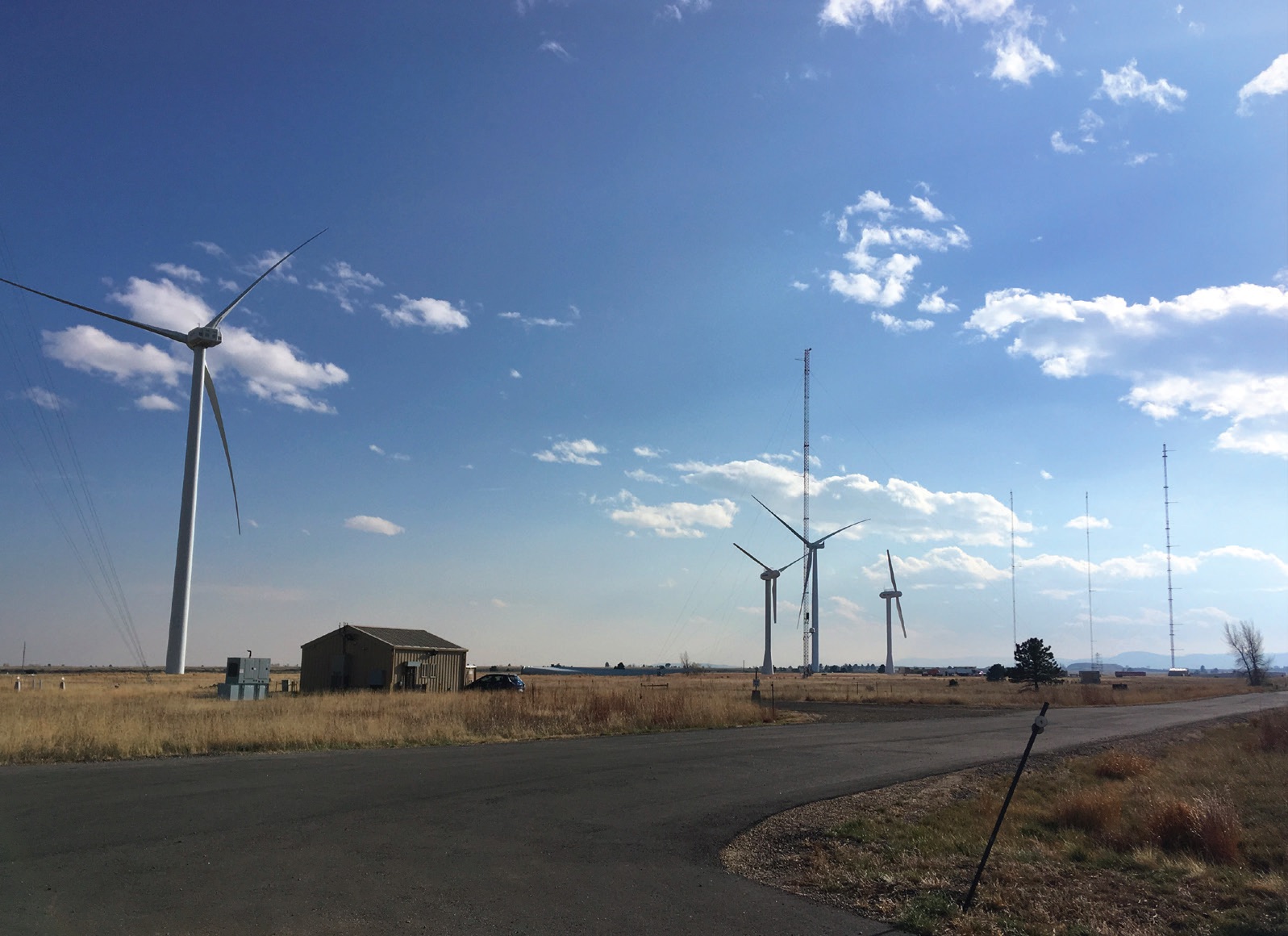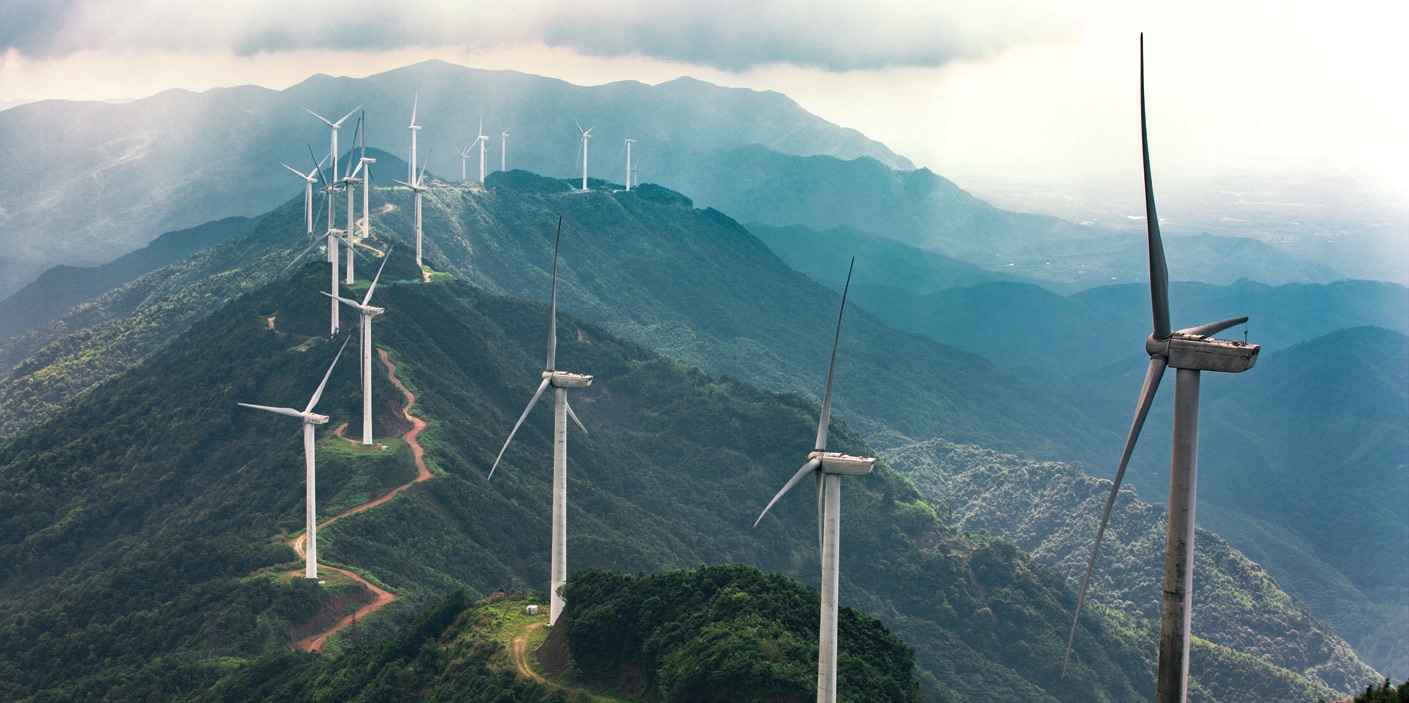KEY CONCEPTS
•
The performance of 66 individual wind turbines located in a wind farm was evaluated over a four-and-a-half-year period.
•
During this period, the wind turbines had three technical upgrades. The second upgrade produced the most sustained performance improvement.
•
Wind turbines located on a hilltop generated more electricity but were found not to be the most efficient.
The movement toward sustainable energy sources is leading to research to maximize the power generated by wind turbines. This process will have a significant impact on the durability and resilience of the electric grid—not to mention the stress placed on lubrication of wind turbine gearboxes.
In a previous TLT article,
1 a study was conducted using high-resolution numerical simulations to assess the impact of adding wind energy capacity on the efficiency of electrical power production to the electric grid in the eastern U.S. Quadrupling the wind turbine capacity in the eastern U.S. is projected to have only a small impact on power-generation efficiency and will lead to an electric power production increase of over 3.6 times. Additionally, the increase in wind turbine capacity will not influence near-surface climate properties at both the regional and local scales.
Improving wind turbine power generation also must involve an evaluation of individual turbines in specific wind farms (
see Figure 2). Yu Ding, Mike and Sugar Barnes professor in the Wm Michael Barnes ’64 department of industrial and systems engineering at Texas A&M University, says, “Analysis of the performance characteristics of an individual wind turbine occurs in a uncontrolled environment, making it very challenging. Wind turbine operating conditions are changing all the time due to changes in wind speed and direction, atmospheric instability and air density.”
 Figure 2. A case study was presented evaluating the performance of individual wind turbines on a wind farm over a finite period of time. This approach can be used to evaluate wind turbines such as those shown at the National Wind Turbine Technology Center in Boulder, Colo. Figure courtesy of Texas A&M University.
Figure 2. A case study was presented evaluating the performance of individual wind turbines on a wind farm over a finite period of time. This approach can be used to evaluate wind turbines such as those shown at the National Wind Turbine Technology Center in Boulder, Colo. Figure courtesy of Texas A&M University.
The uncertainty in dealing with the wind is in contrast to other energy sources including oil, natural gas and nuclear power. Ding says, “More control is present for each of these other energy sources, including the quality of the fuel used and how much is used. Only the electricity output needs to be measured. For determining turbine performance, it is impossible to control the input, which is the wind and other environmental conditions.”
Two types of comparisons of great interest are comparing the performance of one wind turbine versus a second wind turbine in a wind farm and also evaluating how a specific turbine’s performance changes over time. This approach is known as a space-time performance analysis. Changes in the performance of a wind turbine over time is important because an individual wind turbine will receive periodic technical upgrades over time, making it important to evaluate how these upgrades translate into actual performance improvement.
Currently, there are few international standards available to evaluate the performance of wind turbines. Ding says, “The International Electrotechnical Commission (IEC) has produced a standard practice that focuses on evaluating how much power is produced by a specific wind turbine. One such standard is the so-called production-based availability, which involves a power curve that estimates the presumed power output from a turbine at different wind speeds.”
The IEC method is limited because it primarily considers wind speed and, to a secondary extent, the actual commercial turbine’s operational conditions. A new approach that is an extension of the IEC method has now been developed and used to study the performance of turbines in a wind farm over a five-year period.
Case study
Ding and his colleagues conducted a case study that evaluated the performance of 66 individual wind turbines located in a wind farm. Ding says, “We conducted a data-driven study to better understand how each of the turbines in a wind farm compared to each other and changed over time. The wind farm is land-based and exhibits a relatively complicated terrain due to the presence of hills and valleys.”
 Wind turbines situated on a hilltop at the highest elevation point in the wind farm generated more electricity than wind turbines present at lower elevations but were not the most efficient.
Wind turbines situated on a hilltop at the highest elevation point in the wind farm generated more electricity than wind turbines present at lower elevations but were not the most efficient.
Three methodological steps used by the researchers in their analysis approach were to first build a data science model, then ensure that environmental conditions were the same in evaluating wind turbines before and after a technology upgrade and, lastly, quantify the noise and uncertainty present in the data to present a 95% confidence interval can be achieved in evaluating individual turbines over multiple time periods.
In the initial evaluation, the researchers selected specific wind turbines to study to check the viability of their approach. Ding says, “We worked with Turbine #12 because it is situated in the middle of the wind farm, closest to the only met mast on the wind farm and was the most accurate in terms of data collection of all 66 turbines studied. Turbines #45 and #54 also were selected for initial study on wind direction because this data was directly calibrated by the wind farm operator. Using these two turbines gave us the opportunity to produce quality data science models in our first steps.”
The researchers looked into three technical upgrades that took place in a span of four-and-a-half years and found that two of the three upgrades did not lead to a significant increase in performance of individual wind turbines. The second upgrade tended to produce the most sustained performance improvement, to the delight of the wind engineers, because it was the cheapest upgrade option. A second interesting data point involved those wind turbines situated on a hilltop at the highest elevation point in the wind farm. As expected, they generated more electricity than wind turbines present at lower elevations but were not the most efficient. The value of this type of analysis is that the wind farm operator can use this data to improve the efficiency of the highest elevation turbines to further boost power output.
One other challenge faced by the researchers is placement of the sensors to collect the turbine data. Ding says, “On advisement of the wind farm operator, we used the data from the anemometers on the nacelle of the wind turbine. This is not ideal because the wind data is collected in the wake of the rotor, which can lead to uncertainty and error. The other option was to use the wind measurements from the met mast. The latter was not desirable either because the wind farm had only one mast that will lead to inaccuracy for turbines that are not near it. There is no perfect solution, but we decided to use the nacelle anemometers because previous studies showed that doing so led to a better data science model.”
Future work will be focused on refining this approach. Ding says, “Our objective is to gain a general acceptance of our approach with the wind industry. We also are looking to better determine what technical upgrades to turbines will lead to an improvement in efficiency.”
Other issues the researchers intend to look at include how the lubricants used in turbine gearboxes and bearings will impact performance. Ding adds, “This issue is much less settled, but our most recent study indicates that lubricant selection may also influence how efficiently turbines generate electric power from wind.”
Additional information can be found in a recent article
2 or by contacting Ding at
yuding@tamu.edu.
REFERENCES
1.
Canter, N. (2020), “Expanded U.S. wind energy capacity,” TLT,
76 (6), pp. 20-21.
2.
Ding, Y., Kumar, N., Prakash, A., Kio, A., Liu, X., Liu, L. and Li, Q. (2021), “A case study of space-time performance comparison of wind turbines on a wind farm,”
Renewable Energy,
171, pp. 735-746.